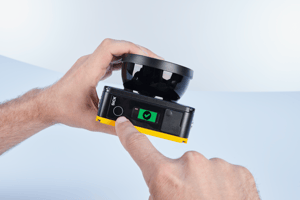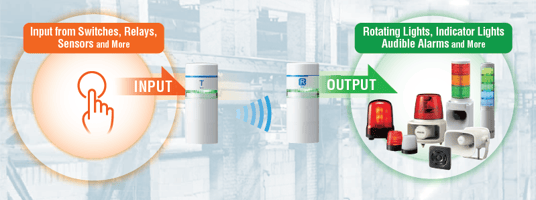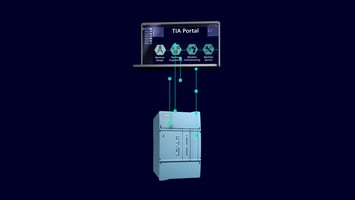Production stoppage due to safety scanner failures costs manufacturers thousands per hour in lost...
Understanding safeHDDM® Technology: How the nanoScan3 Maintains Reliability in Challenging Environments
Industrial safety systems frequently struggle with false alarms in harsh environments. Dust particles, ambient light, and reflective surfaces can trigger unnecessary shutdowns in conventional safety scanners. SICK's nanoScan3 with safeHDDM® (Safe High Definition Distance Measurement) technology offers a solution specifically engineered to overcome these challenges.
The Technical Advantage of Multi-Pulse Detection
Traditional safety scanners use single-pulse time-of-flight measurement, making them vulnerable to environmental interference. The nanoScan3 takes a fundamentally different approach with safeHDDM® technology.
Rather than relying on a single measurement point per angular resolution, safeHDDM® emits multiple pulses per revolution – effectively 80,000 laser pulses within each scan of its 275° scanning range. This creates a high-density measurement field that enables advanced signal processing to distinguish between actual obstacles and environmental conditions.
These small bundles of pulses also provide small bundles of remission values, allowing the scanner to create a histogram to effectively maintain detection capability. As a result, incredibly black surfaces down to a 1.8% remission value can be reliably detected.
Performance Metrics in Challenging Environments
The nanoScan3's technical specifications quantify its environmental resilience. With ambient light immunity of 40 kilolux (per IEC 61496-3), it remains reliable under intense industrial lighting or near sunlit entrances. Even with light sources directly in the scan plane, it maintains immunity up to 3 kilolux.
The scanner's IP65 enclosure rating ensures protection against dust and water jets, while its compliance with vibration and shock resistance standards (IEC 60068-2-6, IEC 60068-2-27) makes it suitable for mobile applications. These characteristics enable consistent 3-meter protective field performance even in conditions that would compromise conventional sensors.
Application Impact
In manufacturing facilities with machining operations, the nanoScan3 prevents the false trips that typically occur when dust and debris interfere with safety scanners. For assisted guided vehicles navigating between varied lighting zones, the scanner maintains consistent performance without triggering false alarms that would interrupt material flow.
The compact dimensions (80mm height, 106.6mm × 80mm × 117.5mm overall) and light weight (0.67kg) allow integration into space-constrained applications like small mobile robots. Engineers can monitor system health through built-in contamination measurement features and access event history for up to 150 past events.
By addressing the fundamental limitations of conventional safety scanning technology, the nanoScan3 provides a solution that delivers both required safety protection and operational reliability in challenging industrial environments.
To learn more, contact marketing@eandm.com for more information!




